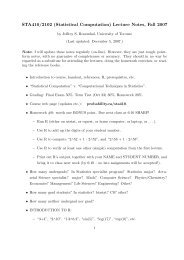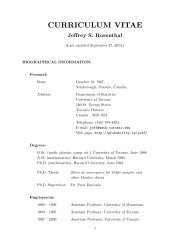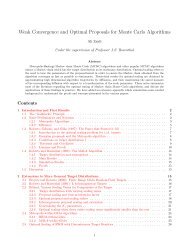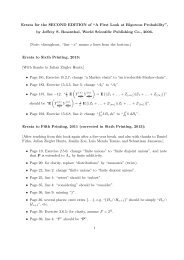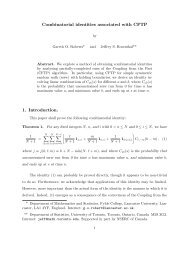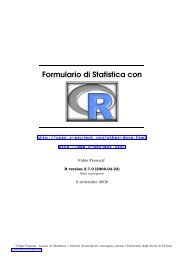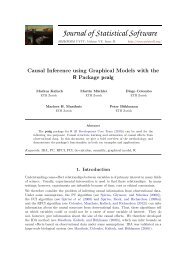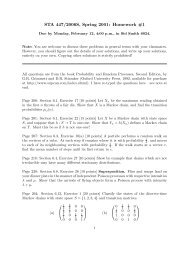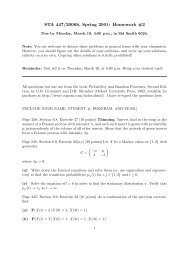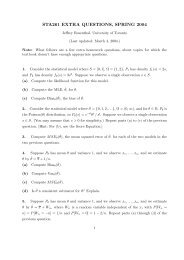Package 'extRemes' - What are R and CRAN?
Package 'extRemes' - What are R and CRAN?
Package 'extRemes' - What are R and CRAN?
You also want an ePaper? Increase the reach of your titles
YUMPU automatically turns print PDFs into web optimized ePapers that Google loves.
18 decluster<br />
which.cols<br />
which.plot<br />
method<br />
clusterfun<br />
groups<br />
r<br />
replace.with<br />
numeric of length one or two. The first component tells which column is the one<br />
to decluster, <strong>and</strong> the second component tells which, if any, column is to serve as<br />
groups.<br />
character string naming the type of plot to make.<br />
character string naming the declustering method to employ.<br />
character string naming a function to be applied to the clusters (the returned<br />
value is used). Typically, for extreme value analysis (EVA), this will be the<br />
cluster maximum (default), but other options <strong>are</strong> ok as long as they return a<br />
single number.<br />
numeric of length x giving natural groupings that should be considered as separate<br />
clusters. For example, suppose data cover only summer months across<br />
several years. It would probably not make sense to decluster the data across<br />
years (i.e., a new cluster should be defined if they occur in different years).<br />
integer run length stating how many threshold deficits should be used to define<br />
a new cluster.<br />
number, NaN, Inf, -Inf, or NA. <strong>What</strong> should the remaining values in the cluster<br />
be replaced with? The default replaces them with threshold, which for most<br />
EVA purposes is ideal.<br />
na.action function to be called to h<strong>and</strong>le missing values.<br />
xlab, ylab, main, col<br />
optioal arguments to the plot function. If not used, then reasonable default<br />
values <strong>are</strong> used.<br />
... optional arguments to decluster.runs or clusterfun.<br />
plot: optional arguments to plot.<br />
Not used by print.<br />
Details<br />
Runs declustering (see Coles, 2001 sec. 5.3.2): Extremes separated by fewer than r non-extremes<br />
belong to the same cluster.<br />
Intervals declustering (Ferro <strong>and</strong> Segers, 2003): Extremes separated by fewer than r non-extremes<br />
belong to the same cluster, where r is the nc-th largest interexceedance time <strong>and</strong> nc, the number of<br />
clusters, is estimated from the extremal index, theta, <strong>and</strong> the times between extremes. Setting theta<br />
= 1 causes each extreme to form a separate cluster.<br />
The print statement will report the resulting extremal index estimate based on either the runs or<br />
intervals estimate depending on the method argument as well as the number of clusters <strong>and</strong> run<br />
length. For runs declustering, the run length is the same as the argument given by the user, <strong>and</strong> for<br />
intervals method, it is an estimated run length for the resulting declustered data. Note that if the<br />
declustered data <strong>are</strong> independent, the extremal index should be close to one (if not equal to 1).<br />
Value<br />
A numeric vector of class “declustered” is returned with various attributes including:<br />
call<br />
the function call.



